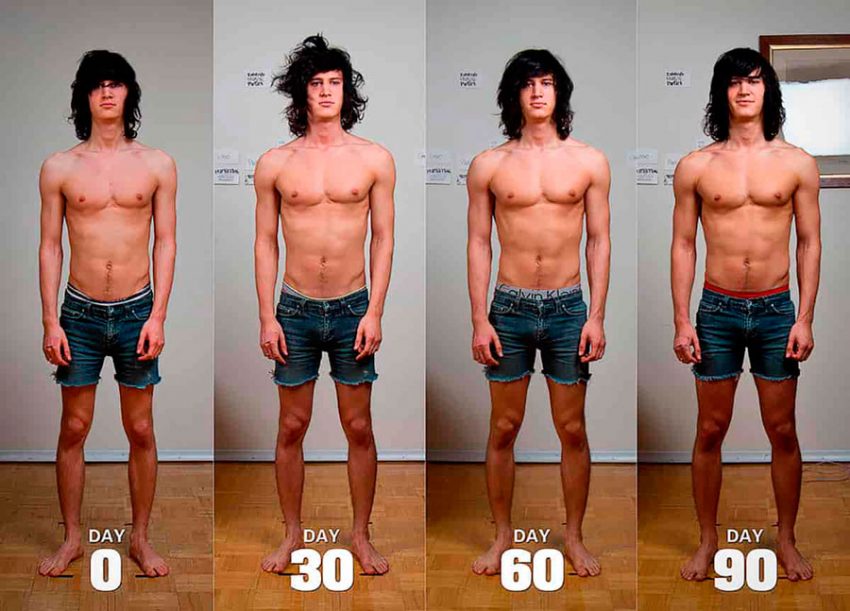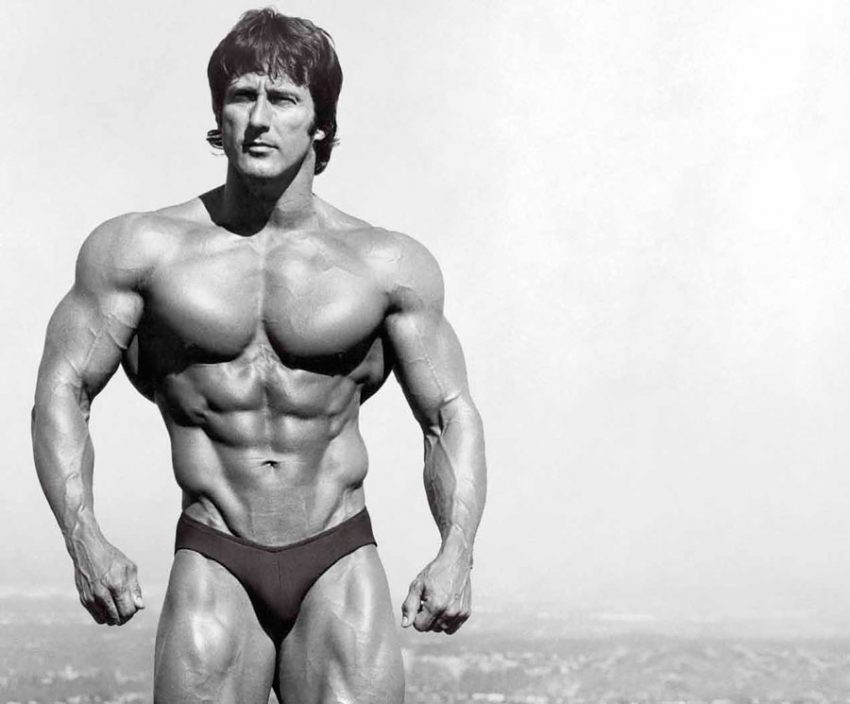Gaining muscle mass is a beginner’s dream. To quickly build up the required volume, become stronger, more prominent and look better is a worthy goal. But the exact time of its achievement is difficult to say. Human bodies obey many genetic and physiological laws. We all lead a different way of life, and we have peculiarities of diet, assimilation of food, training regime and rest. But people keep asking how long it takes to actually build, how much you can gain, and where is the limit to muscle growth. Let’s try to understand this question.
Answers to questions: more important than you think

If to know scientifically substantiated answers to questions about the speed of pumping muscles, you can get rid of illusions and make fewer mistakes in the process of working on yourself. High expectations in the gym are the cause of injury, frustration, and premature transition to anabolic steroid use. We read articles that tell how this or that actor gained 12 kg of lean muscles in 3 months, and we think that at lower speeds you should not even hope for adequate results in the gym.
It’s good if a beginner is just continues to teach the technique of basic exercises and laments that, unfortunately, he is not Wolverine. And what if he starts buying useless supplements for muscle growth, purchasing diets from “Instagram gurus”, and eating everything from a gainer to grandma’s cottage cheese with jam. What will he get in the end? Upset stomach at best. Excess fat, and liver and kidney problems at worst. Useless supplements siphon off a lot of money, a person begins to think that the gym is the lot of the rich, and, as a result, falls back on his favorite sofa. Health does not improve from this, and self-esteem collapses.
It’s even more difficult for girls. They dream of having rounded buttocks, toned hips, and beautifully traced back and shoulders, but they do not want to look like professional bodybuilding athletes, for the most part. Many people really believe that huge “masculine” muscles do not build from a combination of hard training, anabolic steroids, and a certain diet, but simply from the very fact of doing squats, deadlifts, and bench presses. That is why the fitness industry offers a new “muscle tightening” program every day. As a result, many hours that could be spent effectively in the gym are wasted on the next nonsense, which, at best, strengthens the cardiovascular system, and at worst, simply increases appetite, not giving stimulus to muscle growth.
Knowing the real rates of muscle growth saves time and money, and simplifies the task for the psyche.
How much muscle mass you can actually gain
Muscle gain mass is not a priority subject of research by medical scientists. Today there are only a few scientifically based positions on this topic. A fairly well-known experiment by Arthur Jones showed that a healthy man without the use of anabolic steroids and subject to adequate nutrition, recovery and hard training in failure can gain no more than 8 kg of muscle in a training cycle of 12 weeks. It was about initially strong and athletic people who are not overweight.
Biologists say that in a lifetime you can type:
- About 22 kg if you are a man;
- About 12 kg if you are a woman.
Why do professional bodybuilders deny this? The answer is simple – anabolic steroids. They accelerate protein synthesis, allow you to build up volumes and mass more than nature provides for a particular person. But you need to understand that the use of such substances has side effects for both men and women, and is not justified for the purposes of health-improving fitness.
There are other data – in a week with an ideally built regime, a man can add order 100 g of muscle mass, a woman – about 50 g. It is sometimes said that the maximum recruitment rates for men for a 12-week training cycle are about 6 kg, for women – 2-3 kg, while this refers to the total body weight, and not only muscles.
Important: weight gain can be more significant, since with excess nutrition, not only muscle mass grows, but also a person’s body fat.
Of course, there are exceptions to rules. Average values are valid for the so-called average genetic endowment. There are people who can gain more and faster, and those who can gain less. Usually insignificant indicators of the set are compensated by the fact that a person practically does not add in the body fat. Therefore, ectomorphs can be lean and embossed with fewer muscles, and endomorphs can spend significant energy on reducing the fat layer, but still look “damp”.
How much time can you really pump up?

So, we found out the maximum indicators of muscle gain. How fast can you gain muscle in reality?
- Average for men : 100 to 200 grams of muscle per week (this is about 0 , 5-1 kilograms per month);
- Average for men: 50 to 100 grams of muscle per week (this is about 200-500 grams per month).
Is this set in reality? Usually people are gaining more or less. There are many factors – dietary style, the amount of salt in the diet, the ratio of macronutrients, the amount and quality of carbohydrates. In addition, weight is influenced by stress levels, hormonal surges in women, taking medications, and even a common cold.
Sometimes people cannot gain even a gram simply because they are prone to work and family stress, and stress increases consumption calories. Someone suffers from a lack of sleep, while others – because of its quality. Therefore, calculating weight gain in advance is a rather difficult job.
In strength sports, usually an 8-12 week cycle allows a beginner athlete to add 3-5 kg of weight, taking into account the fact that he monitors nutrition. But training is significantly different from bodybuilding – a large amount of work in basic exercises and relatively little in auxiliary ones. It is also indicative that before the competition a power worker can lose 2-3 kg of “water” weight, when the microtraumas of the muscles heal and the muscles cease to hold the weight. This well-known effect allows weight classes to be planned. And for fitness beginners – to judge the real weight gain and its speed.
6 factors affecting muscle growth and their ratio

The above works well in theory. In practice, the factors of muscle growth and their ratio can change significantly under the influence of various conditions. These include
Anabolic steroids
Cultural reticence about the fact that anabolic steroids accelerate protein synthesis several times allows online – to trainers all over the world to sell 12-week programs of crazy muscle growth, and to sports nutrition companies – to regularly offer different proteins, amino acid complexes, and gainers to those people who “normally” would not buy something like that. Anabolics are banned in most countries of the world, but not for personal use, but for distribution. They have side effects, but they will never leave the world of bodybuilding and fitness, as only steroids help you to really pump up quickly. If you see someone completely change their physique literally in 3 months, it is very likely that they have taken steroids.
Training experience
Beginners can actually build muscle and burn fat at the same time. At the same time, the mass gain will be really high-speed, in the first year, many are gaining up to 5-10 kg, and then progress slows down. The more experience, the slower the progress. But if, for example, a person leaves the gym for some life reason, coming again, he will return results faster. It is believed that with each mass-dry cycle, progress only slows down in growth, and it will be easier to dry, because experienced athletes look better than beginners.
Muscular memory
This phenomenon has more to do with people who previously used anabolic steroids, and then suddenly decided to become natural athletes than to “clean” athletes. First, a couple of years are devoted to classical training with pharmacological support, mass is gained, and a large training volume is done. And then the athlete intentionally goes to some “rollback” in weight, stopping the use of anabolic steroids.
If he does not give up training, but only reduces the training volume, his muscles will remain “in place.” If he leaves the gym, then the muscle mass will decrease. After this happens, it may take several years, but the accumulated neuromuscular connections will not go anywhere. Then, when the athlete returns to the gym, some of the mass will be “recruited” rather quickly.
Natural athletes also have muscle memory. The higher the level of the athlete, the more experience and technical skill, the better muscles return after a break.
Genetics

Someone was unlucky with her, and he cannot gain even a couple of kilos, provided that he eats and trains like a professional athlete. But there are also mesomorphs who look like people using steroids, but they themselves only exercise 3 times a week, and regularly eat regular food. Unfortunately, genetic predisposition to certain sports is not fiction, but reality. Hormonal balance, bone structure of the body, the number of muscle fibers, the tendency to gain fat and the rate of metabolic processes, as well as the amount of digestive enzymes, the characteristics of the central nervous system and the speed of reactions – all this matters when it comes to the speed of pumping muscles.
Age
The hormonal explosion characteristic of youth must be used to its fullest. Testosterone levels in adulthood can drop, so the rate of muscle recruitment will be slower. Young athletes have not only a higher level of anabolic hormones, but also better work out the load of the central nervous system. Therefore, those who played sports before the age of 20 gain muscle easier in the future. Neuromuscular connections are developed, and the person only needs to slightly adjust the training volumes and loads. It is believed that effective natural bodybuilding is possible from the age of 15.
Workout and nutrition
It is impossible to gain muscle if there are not enough training stimuli for their growth, and quality nutrition for recovery of the body and protein synthesis. There are many factors that matter, but usually the meaning of the program is that it should be suitable for a specific person for his lifestyle, movement characteristics and training level. Many beginners use ready-made workout plans from bodybuilding magazines and do not succeed. They go to the gym 5-6 times a week, they firmly believe in the need to do cardio on the weight, and perform some special exercises, but everything is quite simple. A huge training volume only increases calorie expenditure, and does not allow the central nervous system to “digest” the load. As a result, the level of hormones drops, catabolic processes increase, ordinary food is not enough for recovery, and instead of mass, a person gets fatigue, injuries and rather small muscles. The main rule of training a natural athlete is less volume, more working weight, and more multi-joint movements. In addition, there is no particular point in doing strength training more than 3 times a week. In the diet, you should keep a proportion of about 1.5 g of protein per kilogram of body weight, and 5-6 g of carbohydrates. Moreover, the latter should not only be simple and drawn from sugar and fruits. Pasta, potatoes, rice and buckwheat – these are the basis of the diet of a natural athlete “on the mass”. It is important to eat enough fat for the hormonal system to function properly. But they should not be more than 1.5 g per kilo of body weight so that a person does not experience digestive problems.
Are there “most working” universal programs for the mass? No, everything needs to be selected individually. For some, more frequent workouts with an average weight are suitable, for others, you really need to do one failure approach in order to generate enough stimulus for muscle growth. There are also athletes who grow well exclusively from power schemes, there are from multi-repetitions. Nutrition is also not so simple, someone does not tolerate gluten, someone can eat everything, there are individual preferences. The point of coaching is just to analyze the individual characteristics of an athlete, and select a program for them.
Conclusion
So, how much can you dial, and for how long? It all depends on the length of service, the desire to devote your workouts to the recruitment, and on the general development, and the ability to eat regularly and of good quality. Not a single gainer will “overpower” the fact that a person simply eats too little food, and does not gain the required amount of macronutrients for recovery. The period of mass does not need to be planned and when there are severe stresses at work, school or in life. Eating, sleeping, recovering, resting, and a smart workout plan will help you gain more muscle in a short time.

